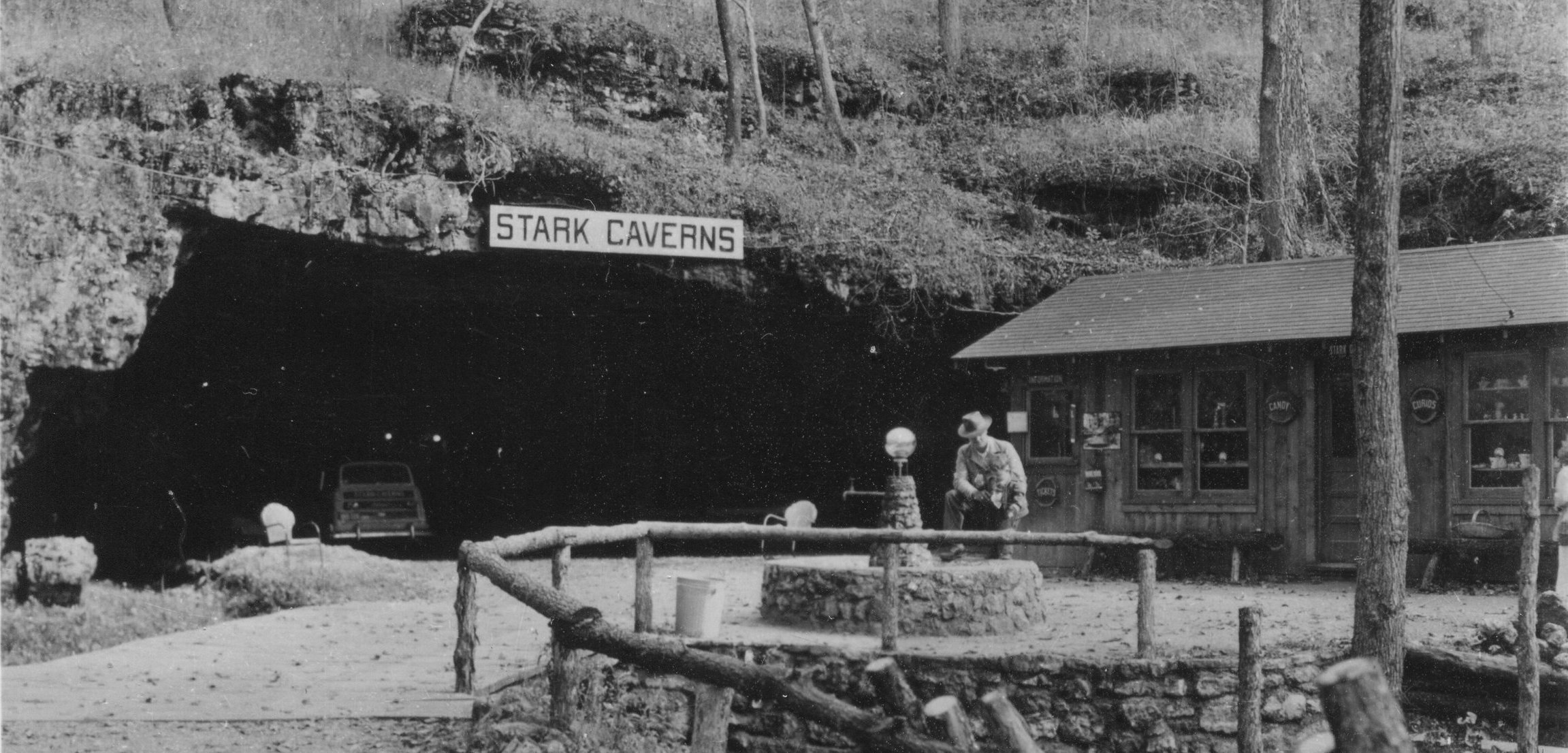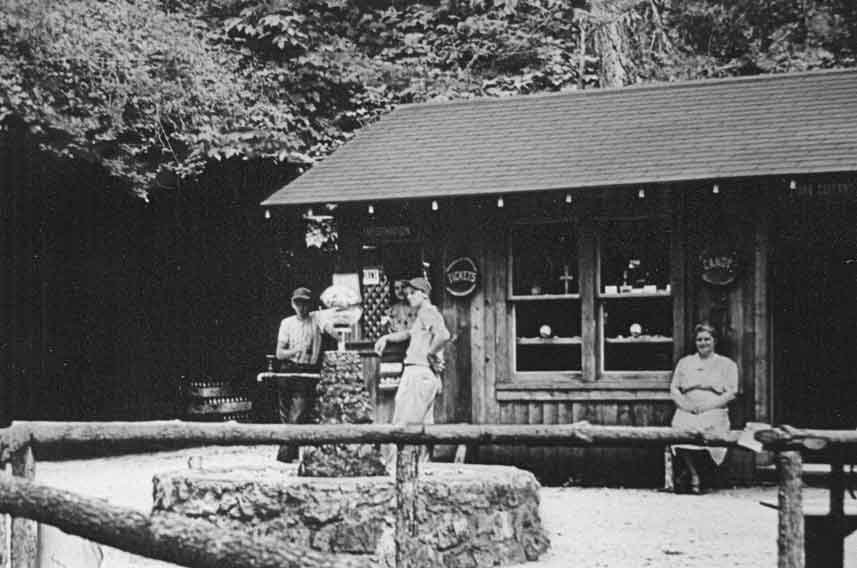
Stark Caverns
Native Americans
The first humans known to occupy the cave were Native Americans. It is believed that an ancient fire-pit is located at the furthest point back in the cave where natural light can be seen. Pottery and other artifacts have been found both inside and outside of the cave. In 1967, while staff members were digging a hole for a post near the entrance of the cave, human remains were discovered. An archaeologist from the University of Missouri was brought in to examine the excavation, which revealed the remains of four Native Americans believed to have lived during the Late Woodland Period (2000 to 1000 B.C.). Native American remains are protected by state and federal regulations and were retrieved by the Osage Nation in 2021 after having been on display in the cave for over 50 years.
Early American Settlers
Perhaps the most documented use of the cave by our ancestors was by early Missouri settlers. Although the land parcel boundaries varied as Missouri was being settled, we know of three separate families that owned at least a portion of the current Stark Caverns grounds. The first settler documented on our site was William Bunker, a veteran of the war of 1812. Mr. Bunker’s descendants provided us with a copy of his Military Land Grant dated December 5, 1857. He apparently had a neighbor, James Baldwin, who received a similar grant dated December 1, 1857. Charles Stark received a land patent for 120 acres on June 1, 1859. Again, we cannot easily distinguish where their property boundaries were at the time. It’s believed that the Bunkers lived on the hill above the cave with their 6 children and that the Starks were closer to the entrance. Stark was attracted to the property specifically because of the cave and its ability to serve as a shelter for his cattle and use as a cool location for summer chores.
Mr. Stark had 18 children with 2 wives (the first died early) and sold the property to his youngest son, Elisha Stark, for $250 on December 21, 1877. Over the years, the community participated in many events at what came to be called Stark’s Cave, because it was cool in the summer and warm in the winter. There are records of fiddlers and dances, sermons, apple storage, clothes washing and more before the cave became a tourist destination. The cave was known informally by several names until 1950 – Stark’s Cave, Aurora Cave, Aurora Springs Cave, Miller County Cave and the Mammoth Cave of Miller County.
Confederate Guerillas
The cave was also a meeting place, and supply depot for Confederate Guerillas during the Civil War. According to civilwar.mo.org, guerrilla warfare went on in Missouri for most of the Civil War. Bands of pro-South men would hunt and kill Union soldiers and pro-Union civilians. One of the most notable attacks happened 90 miles north of Stark’s Cave, in Centralia, Mo. and was led by a man named Bill Anderson. Anderson earned the nickname Bloody Bill. In 1864 Bloody Bill broke away from a larger band of bushwhackers after a dispute and went on to terrorize Missouri with an independent band. One day these guerillas supposedly ran into 20 Union soldiers on leave. They had them stripped, murdered, and mutilated. The brutality of Bloody Bill’s gang, with such infamous members as Frank and Jesse James, continued and became legendary after the war’s end.
Speakeasy and Dancing
Adding to the cave’s colorful history, during the early 1900 prohibition era (ban on the production, importation, transportation, and sale of alcoholic beverages) the cave became popular as a moonshine distillery and speakeasy, complete with a dance floor in the area we call the Ballroom today.
Other uses over the years have included a roller and ice-skating rink, a pony merry-go-round, and a trout farm, created by three pristine creeks that flow into the property. The primary stream was dammed in the mid-1970’s to form a lake outside of the cave. The boardwalk was built at that time as well. We have some great photographs from the construction during that time.
Show Cave Operations
A group of businessmen, led by Floyd Hammitt opened Stark Caverns as a tourist attraction in 1950. They based the name on how it was known locally, Stark’s Cave, but changed “Cave” to “Cavern” to denote the large size of the cave. Since then, the cave has been operated under several names including Enchanted Caverns and Fantasy World Caverns. Jeff and Amy Hargroves purchased the cave in early 2017 and took it back to its original public name – Stark Caverns. The cave reopened for tours with a temporary Visitor’s Center in July 2017. Jeff had history with the cave since he had worked as a Tour Guide at the cave during his high school years in Eldon.
The Tour
The cave tour pathways are paved and well lit. Most of the structures built inside the cave (short pathway walls, cascading pools of water, handrails, etc.) were constructed from 1950 - 1975, giving the entire cave a charming, warm and historical feel. It stays a mild 57 degrees year-round, and is 90 percent handicapped accessible. It is a good-size cave, with many spectacular natural formations including soda straws, flow stone, stalactites, stalagmites, helictites (bent soda straws), and large columns. The cave’s predominant fossil is stromatolite -fossilized blue green sea algae- that was alive during the time Missouri was submerged. Stromatolites cover a significant portion of the ceilings within Stark Caverns. Geologic records indicate that the Stark Caverns stromatolite quality and quantity are among the largest and best in North America.








